Coir mesh is a natural netting made from coconut fibers, and it’s becoming a popular choice for outdoor projects. If you’ve had trouble with erosion, shifting soil, or growing plants in tricky areas, this coconut fiber netting might be just what you need. Landscapers, gardeners, and environmental workers often use coconut fiber mesh in smart ways to fix these problems.
In this blog, we’ll explain why coir mesh works so well and share some of the best ways to use it outdoors. It could be the simple and eco-friendly solution your next outdoor project needs.
Why Coir-Based Mesh is a Smart Choice for Outdoor Projects
Coir-based mesh stands out because it blends strength with sustainability. The natural coconut fibers are not only tough but also gentle on the environment. This makes it great for projects in nature-rich areas like hillsides, gardens, or any place without interfering with the ecosystem.
The way the mesh is woven is another reason it works so well outdoors. Its flexible nature allows it to follow the shape of uneven ground, making it perfect for slopes, jagged terrains, or curves. The open weave also fits around existing vegetation and encourages new plants to grow right through it.
Because coir netting is biodegradable, you don’t have to worry about removing it later. Over time, it breaks down and feeds the soil with organic matter. That means less effort for you and more benefits for the land.
Compared to plastic-based meshes, which often stay in the environment long after their use, coir mesh is a cleaner, greener option. It does the job just as well and leaves no waste behind.
Smart Outdoor Applications of Coir Mesh
1. Slope Stabilisation
Coir mesh is highly effective in stabilizing soil on slopes and embankments. The best way to lay the mesh is in the same direction as the water flow. This reduces pressure on the mesh and helps it last longer. The protruding fibers of the mesh provide an extra grip that binds loose soil particles. For optimal results, the mesh must be in close contact with the ground. This ensures proper support and reduces gaps that allow soil displacement.
Tip: Use it with coir logs for even better erosion control, especially in rainy areas.
2. Garden Bed Protection & Bordering
In garden spaces, coir netting can be used to keep the topsoil from washing away during rain. Another lesser-known benefit of this mesh is preventing wild animals and pets from digging. It acts as a physical barrier protecting from animals while remaining breathable for healthy plant growth. When installing, ensure it is stapled securely to the soil so it remains firm even after watering or rain. You can easily cut and shape the mesh to fit your garden beds or borders.
3. Pathway and Trail Erosion Control
Unpaved natural paths and trails in parks or gardens often get damaged by rain or foot traffic. Coir-based mesh offers a natural and smart solution by reinforcing these paths. When laid along trails, it not only helps retain soil but also improves grip, making surfaces less slippery during wet conditions. Its earthy look blends beautifully with nature, making it a smart choice for eco-conscious parks, eco-lodges, or nature trails.
4. Reinforcement of Unpaved Roads and Temporary Walls
Though not widely known, coir mesh works surprisingly well as a sub-base layer for unpaved or temporary roads. It helps spread the weight of vehicles and people, which reduces damage to the ground. This makes it great for driveways, temporary access roads, and tracks at building sites. It’s also effective for strengthening low-height retaining walls or bunds when combined with other natural materials.
5. Support for Grass or Vegetation Growth
Coir mesh is great for growing grass and ground-cover plants. It lets sunlight, water, and air through to the soil. The fibers also hold moisture and keep the ground slightly warm, perfect for helping seeds grow and roots settle. Because the mesh can bend, you can place it over uneven land or around existing plants. Landscapers use it to quickly grow grass in areas where plants usually struggle to grow.
6. Waterway and Creek Bank Protection
Coir-based mesh is often used near ponds, creeks, and drains to stop soil from being washed away due to rain and water movements. For best results, combine coir mesh with coir logs. The mesh slows the impact of direct rainfall on soil, while the logs installed just below the water’s edge stop any sediment from sliding into the water. This combo helps restore natural plant life and keeps water edges stable, even in damaged or worn-out areas.
7. Eco-Friendly Décor in Film, Stage & Hospitality Settings
Coir-based mesh isn’t just for practical use, it also has aesthetic appeal. In film sets, theatre backdrops, and even in outdoor restaurants, it is often used as a decorative element to create a rustic, natural feel. It lets light and air pass through, which makes it perfect for open-air spaces. Many eco-conscious cafes and venues are turning to coir netting as wall accents, ceiling drapes, or garden partitions to bring an organic vibe to their space. It adds texture and character, while staying true to sustainable design values. As it breaks down naturally over time, it leaves no lasting environmental footprint.
Build Smarter Outdoor Spaces with HEIGER
HEIGER Coir-based Mesh gives you a smart and sustainable way to manage outdoor projects. It’s strong, breaks down naturally, and is better for the environment than plastic products. If you’re planning a project, it’s the right choice for both performance and eco-friendliness.
Explore our ful Coir Mesh collection or reach out to our team for guidance on the best fit for your needs.
Also, don’t miss HEIGER’s full range of erosion control products, including Jute Mesh and Coir Blankets—great options for safe and sustainable land care.

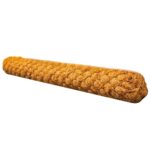 Coir Logs
Coir Logs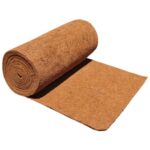 Coir Blankets
Coir Blankets Coir Mesh
Coir Mesh Jute Matting
Jute Matting Jute Mesh
Jute Mesh Silt Fence
Silt Fence Wooden Pegs
Wooden Pegs Retaining Pins
Retaining Pins Raised Garden Beds
Raised Garden Beds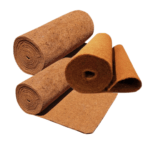 Weed Mats
Weed Mats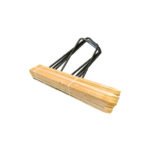 Accessories
Accessories Biaxial Geogrid
Biaxial Geogrid Uniaxial Geogrid
Uniaxial Geogrid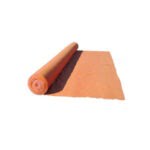 Non Woven Geotextiles
Non Woven Geotextiles Sand Containers
Sand Containers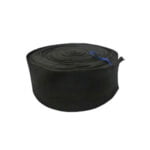 Silt Socks
Silt Socks Dewatering
Dewatering Drain Filters
Drain Filters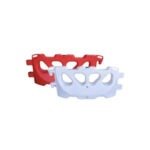 Water Filled Barriers
Water Filled Barriers Edge Protection Barrier
Edge Protection Barrier Hoarding Panels
Hoarding Panels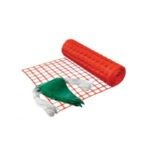 Barrier Mesh & Bunting
Barrier Mesh & Bunting Star Picket Posts & Accessories
Star Picket Posts & Accessories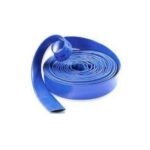 Flood Tubes & Stabilizers
Flood Tubes & Stabilizers Sandbags
Sandbags




